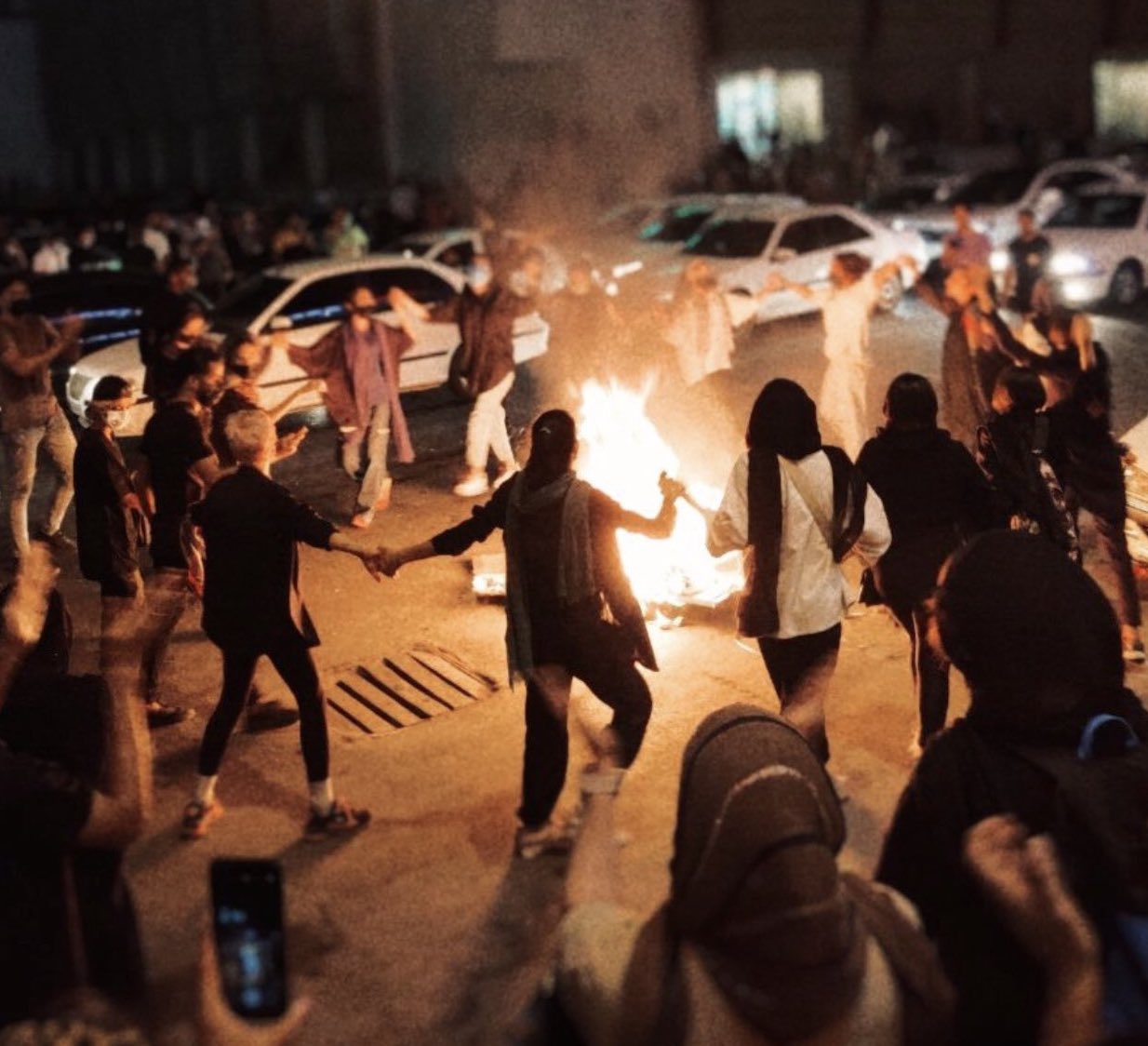Women, Life, Freedom
The Fight for Liberation by Women in Iran

“Your name will become a symbol,” the epitaph on her grave foretold.
Let us begin with her name then, Mahsa Zhina Amini.
Mahsa Zhina Amini, a 22-year-old Kurdish-Iranian woman, died on September 16 in a hospital in Tehran after falling into a coma following her detention by the “morality police.” Despite its ambiguous title, the sole role of this unit is to enforce the Islamic Republic of Iran’s compulsory hijab law in public spaces by arresting women with “improper hijab” in the streets. While the Islamic Republic denies any wrongdoing, evidence has surfaced that point to brain concussion caused by severe beating and injuries as the cause of her death. As of October 1, the regime has taken the lives of least 133 individuals in the nationwide uprising that followed her death. But those are the ones whom we know. For many more, we most probably will never know their names. That is why “Mahsa Zhina Amini” is not just a name but a symbol.
The killing of Mahsa Jina was not an exception; rather, it was the latest manifesto of the Islamic Republic’s death-making ethos. The systematic state violence against women has been one of the governing principles of the Islamic Republic as a theocratic-totalitarian regime since its inception after the 1979 Revolution. For the Islamic Republic, compulsory hijab — or head covering — is not merely a matter of enforcing Islam but is the most symbolic and systematic practice of a gender apartheid that seeks to subjugate women and their bodies.

The Islamic Republic tied compulsory hijab to its ideological existence just a few days after the revolution. Thus, it would be naïve to frame the current uprising in Iran as a reactionary response to “morality police,” or to understand the act of removing and burning headscarves based on what “hijab” means and stands for in other Muslim communities. At the same time, this uprising should not be seen as the first time that women in Iran have opposed compulsory hijab, removing their headscarves in public. Iranian women organized the very first protest after the 1979 Revolution on March 8, International Women’s Day, in opposition to this mandate. In more than four decades since then, the Iranian Women’s Rights Movement has fought courageously against many misogynist laws and state practices despite facing a totalitarian regime that has systematically killed, tortured, incarcerated, exiled, and assaulted women’s rights organizers and activists.
Iranian women have also been fighting another battle; one that is arguably more fundamental but less visible: the everyday battle for life. They have not just survived this battle but thrived despite the deeply rooted sexism and misogyny of Iran’s patriarchal society and culture. On the surface, the “morality police” have been the Islamic Republic’s response to the ways in which women have incessantly pushed the limits of “proper” hijab. A comparison between what “proper” hijab looked like in the 1980s and how it looks now reveals the gradual unveiling through generations. But on a deeper level, “morality police” can be understood as the regime’s vicious, yet futile, attempt to uphold its gender apartheid, to restrain women’s ever-growing autonomy over their bodies and their rapidly increasing agency in society. Far from the reductive image of women in Iran as voiceless victims, it is the Iranian women’s fight for equality and liberation for centuries that has brought us to this revolutionary moment.
But if Mahsa Zhina Amini’s name has become the symbol of this uprising, we should not forget that it is not just the name of a woman, but a Kurdish woman — the Islamic Republic did not even recognize her name “Zhina,” forcing her to have “Mahsa” as her official Persian name. If compulsory hijab symbolizes Islamic Republic’s existential misogyny, the suppression of non-Persian languages symbolizes Islamic Republic’s existential racism. Ethnic and racial minorities in Iran, including but not limited to Kurd, Balooch, Arab, and Afghans, most often belonging to religious minorities as well, have been the subjects of the Islamic Republic’s systemic racism. Mahsa Zhina Amini’s name reminds us that we have to attend to the deadly intersection of structural discrimination where misogyny and racism meet.
Today’s uprising in Iran has many social, cultural, economic, and political roots. It builds upon previous mass protests that have become increasingly more frequent and widespread. It seeks justice for all the atrocities of the Islamic Republic since its inception. Previous protests too have sought the eradication of the Islamic Republic. Yet never before have women’s rights galvanized a nationwide uprising. Never before has women’s daring defiance of a law that defines the Islamic Republic gained such support not only from women who choose to wear hijab themselves, but also from men who for decades have greatly benefitted from the regime’s gender apartheid. Never before have the voices of ethnic minorities turned into the unified, yet plural, voice of a nationwide movement. Iranians have found a chant that is the antithesis to the Islamic Republic’s death-making ethos and its existential misogyny and racism.
Then, let us utter “Women, Life, Freedom” in solidarity with women in Iran who, alongside men, are risking their lives to elevate this Kurdish chant, shouting its Persian translation across the country. Let’s echo the loud voices of an intersectional feminist revolution in Iran, reverberating between us, around the world. Let us join the chorus of “Change for Equality,” Iranian Women’s Rights Movement’s anthem:
“I will sprout from the scar on my skin,
For my being, for I am a woman, a woman, a woman;
If we join voices, if we take a step together, if you hold our hands,
We will liberate ourselves from tyranny;
We will create another world out of equality,
In solidarity and sisterhood,
A happier, better world.”
Correction: The date of Mahsa Amini’s death has been corrected to September 16. It was originally reported as September 17 due to time differences.




You must be logged in to post a comment.